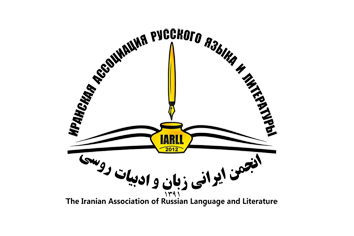CASE AND CASE-PREPOSITIONAL FORMS’ DEVELOPMENT TRENDS IN THE HISTORY OF THE RUSSIAN LANGUAGE
DOI:
https://doi.org/10.52547/iarll.22.5Keywords:
The History of the Russian Language, Non-Prepositional Forms of Nouns, Prepositions’ Origin, Case-Prepositional Forms, Desemantization of the Prototypal PrepositionsAbstract
We can define the following development trends of the case and case-prepositional substantive forms in comparison to the Proto-Indo-European and Proto-Slavic forms. In the Proto-Indo-European period the semantics of the case endings with lots of meanings (dative, locative, ablative, etc.) became more and more blurred and required clarification through special means. This function was performed by the ancient adverbs that turned into prepositions and prefixes. In particular, non-prepositional adverbial forms were displaced by case-prepositional forms (доити города → дойти до города – doiti goroda → dojti do goroda (to reach the city)). They became free syntaxes striving to adverbs. The differentiation of the non-prepositional objective forms and case-prepositional adverbial forms and the semantization of syntactic relations between a verb and the form of a noun took place. The first direction of the prepositions’ semantic development is the development of derived meanings on the basis of the spatial ones. The second direction is the desemantization of the prototypal prepositions and later the appearance of the semantically overloaded derived prepositions (по причине, с целью, вследствие и др.) – po prichine, s tseliyu, vsledstvie etc. (due to, in order to, owing to, etc.). The main factor that influences the development of the propositions is the opposition of the non-prepositional and case-prepositional noun forms, and later the opposition of the desemantized and sematically specialised prepositions.
Extended abstract:
We can identify the development trends of the case and case-prepositional substantive forms by comparing them to the Proto-Indo-European and Proto-Slavic forms.
During the Proto-Indo-European period, the meanings of case endings, such as dative, locative and ablative, became increasingly ambiguous and required clarification through specific means. This role was fulfilled by ancient adverbs, which transformed into prepositions and prefixes. In particular, non-prepositional adverbial forms were replaced by case-prepositional forms (доити города → дойти до города – doiti goroda → dojti do goroda (to reach the city)). They became independent syntactic units functioning as adverbs. The differentiation between non-prepositional objective forms and case-prepositional adverbial forms, as well as the semantic specification of syntactic relationships between a verb and a noun, occurred.
The semantic development of prepositions occurs in two directions. Firstly, through the development of derived meanings based on spatial relationships. Secondly, through the desemanticization of prototypical prepositions, resulting in the appearance of semantically overloaded derived prepositions such as 'due to', 'in order to', and 'owing to'. The development of propositions is primarily influenced by the opposition between non-prepositional and case-prepositional noun forms and subsequently, between desemantized and semantically specialized prepositions.
References
Бранднер А. (2013). Ослабление адвербиальных значений беспредложных падежных форм в древнерусском языке, Вестник Нижегородского университета им. Н.И. Лобачевского. № 6 (2), 43–46.
Виноградов В. В. (1947). Русский язык. Грамматическое учение о слове. М. : Учпедгиз.
Гамкрелидзе Т. В., Иванов Вяч. Вс. (1984). Индоевропейский язык и индоевропейцы. Тбилиси : Изд-во Тбилисск. ун-та. Ч. 1.
Гаспаров Б. М. (1965). Структурно-семантические особенности предлогов в древнерусском языке [Дис. ... канд. филол. наук. 10.02.01. Моск. гос. пед. ин-т им. В. И. Ленина]. Москва : Россия.
Золотова Г. А. (1973). Очерк функционального синтаксиса русского языка. М. : Наука.
Историческая грамматика русского языка. Синтаксис. Простое предложение (1978). М. : Наука
Русский язык конца XX столетия (1984–1995). (1996). М. : Школа «Языки русской культуры».
Табаченко Л. В. (2010). Приставочные позиционные глаголы в истории русского языка, Вестник МГУ. Сер. 9. Филология. № 1, 7–31.
Черкасова Е. Т. (1967). Переход полнозначных слов в предлоги. М. : Наука.
Якубинский Л. П. (1953). История древнерусского языка. М .: Учпедгиз.
СЛОВАРИ и принятые сокращения
Памятники деловой письменности XVII века. Владимирский край (1984). М. : Наука. – Пам. Влад.
Словарь древнерусского языка (XI–XIV вв.). (1988–2019). Т. 1–12. М. : Русский язык. – СлДРЯ.
Словарь русского языка в четырех томах. (1981–1984). Под ред. А. П. Евгеньевой. Изд. второе, исправленное и дополненное. М. : Русский язык. – МАС.
Словарь русского языка ХI–ХVII вв. (1975–2015). Вып. 1–30. М. : Наука. – СлРЯ ХI–ХVII вв.
Словарь русского языка ХVIII в. (1984–2019). Вып. 1–22. СПб. (Л.) : Наука. – СлРЯ ХVIII в.
Bibliography
Brandner A. (2013). Oslablenie adverbial'nyh znachenij bespredlozhnyh padezhnyh form v drevnerusskom jazyke, Vestnik Nizhegorodskogo universiteta im. N.I. Lobachevskogo. № 6 (2), 43–46.
Vinogradov V. V. (1947). Russkij jazyk. Grammaticheskoe uchenie o slove. M. : Uchpedgiz.
Gamkrelidze T. V., Ivanov Vjach. Vs. (1984). Indoevropejskij jazyk i indoevropejcy. Tbilisi : Izd-vo Tbilissk. un-ta. Vol. 1.
Gasparov B. M. (1965). Strukturno-semanticheskie osobennosti predlogov v drevnerusskom jazyke [Dis. ... kand. filol. nauk. 10.02.01. Mosk. gos. ped. in-t im. V. I. Lenina]. Moskva :Rossija.
Zolotova G. A. (1973). Ocherk funkcional'nogo sintaksisa russkogo jazyka. M. : Nauka.
Istoricheskaja grammatika russkogo jazyka. Sintaksis. Prostoe predlozhenie (1978). M.: Nauka
Russkij jazyk konca XX stoletija (1984–1995) (1996). M. : Shkola «Jazyki russkoj kul'tury».
Tabachenko L. V. (2010). Pristavochnye pozicionnye glagoly v istorii russkogo jazyka, Vestnik MGU. Ser. 9. Filologija. № 1, 7–31.
Cherkasova E. T. (1967). Perehod polnoznachnyh slov v predlogi. M. : Nauka.
Jakubinskij L. P. (1953). Istorija drevnerusskogo jazyka. M. : Uchpedgiz.
SLOVARI i prinjatye sokrashhenija
Pamjatniki delovoj pis'mennosti XVII veka. Vladimirskij kraj (1984). M. : Nauka. – Pam. Vlad.
Slovar' drevnerusskogo jazyka (XI–XIV vv.) (1988–2019). T. 1–12. M. : Russkij jazyk. – SlDRJa.
Slovar' russkogo jazyka v chetyreh tomah (1981–1984). Pod red. A. P. Evgen'evoj. Izd. vtoroe, ispravlennoe i dopolnennoe. M.: Russkij jazyk. – MAS.
Slovar' russkogo jazyka XI–XVII vv. (1975–2015). Vyp. 1–30. M. : Nauka. – SlRJa XI–XVII vv.
Slovar' russkogo jazyka ХVIII v. (1984–2019). Vyp. 1–22. SPb. (L.) : Nauka. – SlRJa XVIII v.
Downloads
Published
How to Cite
Issue
Section
License
Copyright (c) 2023 Issledovatel'skiy Zhurnal Russkogo Yazyka I Literatury

This work is licensed under a Creative Commons Attribution 4.0 International License.
![]()
"Creative Commons Attribution 4.0 International (CC-BY 4.0)"


